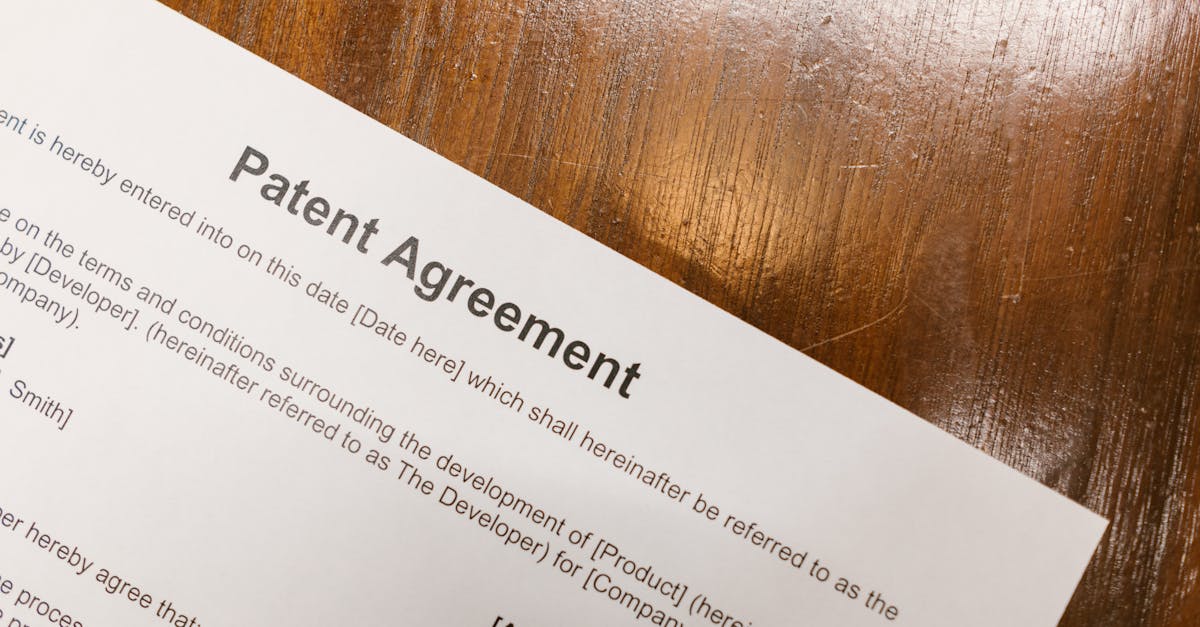
Introduction
Why this matters: If your finance, procurement, or legal teams still wrestle with PDFs, scanned contracts, and messy invoices, you’re bleeding time, increasing exceptions, and exposing the business to reconciliation and compliance risk. As companies scale, manual line‑item and table reconciliation becomes a persistent bottleneck—delaying payments, misposting to ledgers, and creating expensive audit headaches.
Document automation—using no‑code tools, regex and template workflows alongside OCR, PDF parsing and ML—lets you capture rates, milestones and line items reliably and feed clean records into ERPs and BI systems. This article walks through practical approaches and patterns for table extraction and data extraction, covering table types, extraction techniques, normalization and reconciliation, human‑in‑the‑loop validation, audit trails, and Formtify templates you can deploy quickly to reduce manual work and improve accuracy.
Types of tabular data in contracts and invoices (rates, milestones, line items)
Contracts and invoices hide a surprising variety of structured tables. The most common are line items (description, quantity, unit price), but you’ll also see rate schedules, milestone tables, tax and fee breakdowns, payment terms, GL codes and delivery schedules.
Common table types
- Line items: SKU/description, qty, unit price, line total — used for GL posting and PO matching.
- Rates and price schedules: tiered or volume pricing and effective dates for billing logic.
- Milestones and payment schedules: deliverables, due dates, and percent or fixed payments tied to contract performance.
- Summary tables: sub-totals, taxes, discounts, and grand totals for reconciliation.
Recognizing the table type early helps an extraction pipeline decide whether to apply simple text extraction, a table parser, or a more advanced information extraction model. These are common data extraction examples you’ll routinely automate in invoice processing and contract analysis.
Extraction techniques: OCR tables, PDF parsers, smart regex and ML models
There’s no one-size-fits-all approach. Choose techniques based on source quality, format variability, and downstream accuracy requirements.
Techniques at a glance
- OCR table extraction: For scanned documents and images. Modern OCR engines return table structure and cell text — essential for ocr data extraction from PDFs and images.
- PDF parsers: For digital PDFs that retain text and layout. Parsers can extract cell boundaries, coordinates and fonts to reconstruct tables — ideal for data extraction from pdf.
- Smart regex and rule-based parsing: Fast and transparent for predictable templates and invoice formats. Good for text extraction of specific fields.
- Machine learning / NLP models: Use for heterogeneous documents where layout varies. Models can perform entity recognition, table structure prediction and semantic mapping.
- Web scraping & APIs: When data lives on vendor portals or public registries. Useful for data extraction from websites and enrichment.
Most robust pipelines combine methods (OCR -> PDF parser -> ML verifier) and run inside an ETL or data pipeline so results feed cleanly into downstream systems.
When evaluating data extraction tools or data extraction software, test on representative samples: scanned invoices, multi-page contracts, and noisy tables. Include metrics for precision, recall and end-to-end throughput.
Normalizing and reconciling line items to financial and procurement systems
Raw table values rarely match your ERP or procurement master data. Normalization and reconciliation are essential to make the data actionable.
Key normalization steps
- Canonicalization: Map vendor names, units, and currency formats to canonical values.
- SKU/GL mapping: Match extracted descriptions to product catalogs and GL codes using direct and fuzzy matching.
- Unit and price normalization: Convert units, apply exchange rates and calculate unit prices to a standard representation.
- Enrichment: Pull vendor master, PO history, and contract metadata to disambiguate entries.
- Reconciliation rules: Define business rules for PO matching, tolerance thresholds, and auto-approval criteria.
Implement these steps inside your ETL or data integration layer so cleaned records flow to accounting, procurement systems, and business intelligence tools. Good data cleaning and a consistent data pipeline reduce downstream exceptions and manual effort.
Human‑in‑the‑loop validation: sampling, thresholding and dispute workflows
Even the best extraction models will need human review for edge cases. Built-in human oversight maintains quality and enables continuous improvement.
Practical patterns
- Confidence thresholding: Route low-confidence fields or whole documents to a human reviewer based on model scores.
- Sampling: Periodically sample high-confidence extractions for QA to detect drift or vendor-specific issues.
- Dispute and correction workflows: Capture reviewer corrections, attach evidence, and feed them back into model retraining or rule updates.
- Role-based review: Separate quick verification (data entry clerks) from exception adjudication (finance or legal).
- Active learning: Use corrected examples to improve ML models and reduce future human workload.
Design SLAs for reviews and provide clear UI elements (highlight original cell, suggested mapping, and a one-click accept/override) to keep throughput high while preserving accuracy.
Error handling, change logs and audit trails for downstream accounting
Accounting and compliance require transparent, auditable records of what changed and why. Your extraction system must provide defensible audit trails.
Essential controls
- Error classification: Tag exceptions (parsing error, missing field, ambiguous match) so teams can prioritize fixes.
- Retry and fallback: If OCR/parsing fails, try alternative parsers or escalate to human review with preserved raw inputs.
- Immutable change logs: Record original extracted value, reviewer corrections, timestamps, and user IDs for every change.
- Versioning and lineage: Store document versions and map extracted fields back to file locations (page/cell coordinates) for auditability.
- Integration with accounting: Only post to ledgers after validation gates; log posting actions and reversals so reconciliations are traceable.
These practices support compliance, simplify audits, and make it easier to resolve disputes or investigate anomalies discovered by finance or procurement teams.
Use cases: invoice processing, vendor onboarding, contract SLA verification
Invoice processing: Automate capture of line items, taxes, totals and early-pay discounts to accelerate AP workflows. Extracted and normalized data enables PO match, exception routing and automated postings to the ledger — a classic data extraction automation.
Vendor onboarding: Use table extraction to pull bank details, payment terms, tax IDs and contact persons from registration forms and contracts. Combine with web scraping or API checks to validate vendor data against public registries.
Contract SLA verification: Extract milestone tables, service levels and penalties from contracts to monitor compliance. Feed the structured SLA data into BI dashboards and alerting systems to catch breaches early.
Across these use cases, common downstream needs include data integration, enrichment, and routine data cleaning so your systems of record remain reliable.
Formtify templates to kickstart table extraction workflows and mapping rules
Pre-built templates accelerate mapping rules and help you validate extraction flows faster. Use Formtify templates as a starting point to define expected table structures and field-to-ERP mappings.
Starter templates
- Invoice template — maps common line-item fields, tax breakdowns and totals for AP automation.
- Purchase agreement template — captures rates, delivery schedules and milestone payments for procurement workflows.
- Service agreement template — extracts SLA tables, service items and pricing rules for compliance checks.
- Consulting agreement template — useful for milestone billing, variable rates and time-based fees.
These templates plug into your extraction pipeline and can be customized to match your data extraction tools or data extraction software. They’re particularly helpful when onboarding new vendors or rapidly scaling invoice processing, giving you a repeatable mapping rule set to integrate with ERPs, procurement systems and business intelligence tools.
Summary
Conclusion: Automated table and line‑item extraction combines OCR, PDF parsing, smart regex, templates and ML to remove the manual bottlenecks that slow finance, procurement, HR and legal teams. The right pipeline—one that normalizes values, reconciles to master data, includes human‑in‑the‑loop checks, and preserves immutable audit trails—reduces errors, speeds approvals, and keeps ledgers and SLAs defensible. These patterns show how data extraction can be operationalized quickly with no‑code templates and clear validation rules. Ready for a quick start? Explore Formtify’s templates and mapping workflows to deploy fast: https://formtify.app
FAQs
What is data extraction?
Data extraction is the process of pulling structured information—like line items, rates, and milestones—from unstructured or semi-structured documents such as contracts, invoices and scanned forms. It’s the first step in turning paper or PDFs into actionable records you can normalize, reconcile and post to ERPs and BI systems.
How do you extract data from a PDF?
For digital PDFs use a PDF parser that preserves text and layout; for scanned files use OCR to convert images to text and recover table structure. Many pipelines then apply regex or ML models to identify fields, followed by normalization and human review for low‑confidence items.
What tools are used for data extraction?
Common tools include OCR engines (for scans), PDF parsers (for digital files), no‑code platforms and template systems, regex and rule engines for predictable formats, and ML/NLP models for heterogeneous documents. Integration and ETL tools are often used downstream to normalize, enrich and load data into ERPs and reporting systems.
What is the difference between data extraction and data transformation?
Data extraction is about capturing raw values from documents (e.g., quantity, unit price, dates), while data transformation is the work that makes those values usable—canonicalizing names, converting units and currencies, mapping SKUs to GL codes, and applying business rules. Both are required to produce clean records that downstream systems can trust.
Is web scraping legal?
Web scraping legality depends on the website’s terms of service, the jurisdiction, and the type of data being scraped; publicly available information is often accessible, but protected or copyrighted content and personal data may be restricted. When in doubt, use published APIs, respect robots.txt and site terms, and consult legal counsel for compliance-sensitive use cases.





